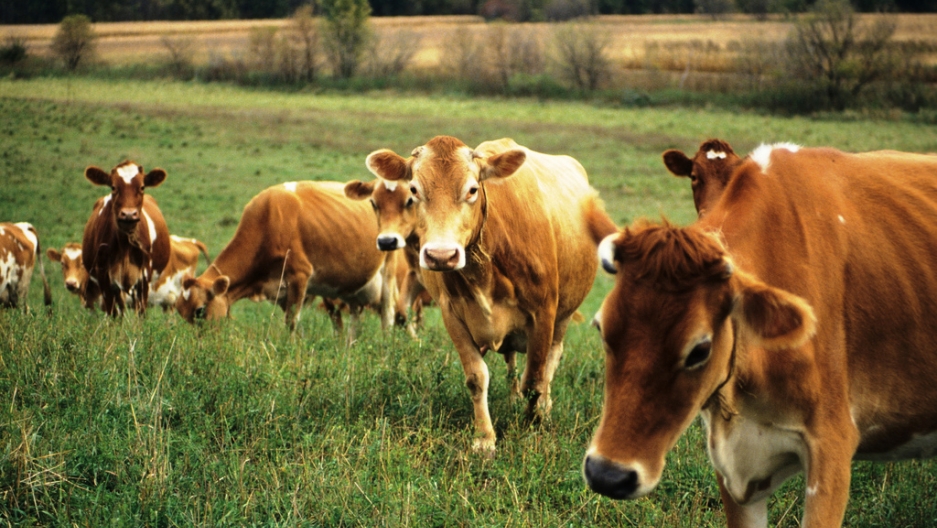Farming livestock could be the way for poorer countries to survive cli-mate change, according to a report issued this week by Livestock Data for Decisions (LD4D).
Ficus thonningii, a species of tree noted for their drought-tolerance, are a common sight in the villages of the dry and mountainous regions of northern Ethiopia but are typically only maintained for shade and ornamental purposes.
Through trial and error, villagers learned that planting these drought-tolerant trees in the areas where local livestock grazed yielded nutritious milk and meat, even while drought wiped out other crops.
Not only that, the combination of trees, forage, and livestock in what is known as a “silvopastoral” system meant that livestock had a greater amount of biomass from which to graze, at a much-reduced level of water use.
Through these indigenous live-stock management systems, some Ethiopian villages escaped the worst of the drought in the 1980s and built a long-term resilience to harsh climatic conditions.
A new map launched by members of the Livestock Data for Decisions (LD4D) community sheds light on the important role that livestock play in building climate resilience for rural communities.
The map features 20 innovations crowdsourced from organisations working around the world to improve the lives of livestock keepers and their animals.
According to the Food and Agriculture Organization of the United Nations (FAO), livestock production, which includes pro-ducing and transporting the feed given to livestock, contributes to around 14.5 per cent of total human-induced greenhouse gas emissions.
There is, however, huge variation in emissions depending on the species, the production system, and the geographic area.
Rising temperatures, unpredict-able weather patterns, and novel pests and diseases will all have a drastic impact on how livestock animals feed, produce, and reproduce.
Likewise, any decrease in the health, nutrition, or wellbeing of livestock due to climate change will have a knock-on effect for the hundreds of millions of rural people who depend on livestock systems in low and middle-income countries (LMICs).
This may disproportionately affect women, who constitute a greater share of the world’s poor livestock keepers.
Despite these threats, and the significant potential for the sector to help rural communities adapt, livestock production only receives a fraction of climate adaptation funds. In 2019, efforts to build
a sustainable livestock sector
in Africa received just US$33 million.
The new map highlights opp-ortunities that could encourage a balance between economic, environmental, and societal sus-tainability in managing livestock.
From smallholder livestock keepers in Ethiopia to scientists in Edinburgh and pastoralists in India, the solutions and innovations raised by these groups can help pave the way for a greener form of livestock production, whilst ensuring livestock systems build the resilience of those communities most vulnerable to the impact of climate change.
The Ficus thonningii silvopastoral systems adopted by Ethiopian farmers are a prime example of a local innovation in livestock management contributing to heightened resilience towards the pressures of climate change.
Originally adopted during the droughts and famines in 1980s Ethiopia, researchers from Me-kelle University have found that the practice has now been adopted by more than 20,000 households across northern Ethiopia as of August 2017.
This practice has also reduced the water use of livestock by up to 83 per cent whilst providing more biomass for grazing animals to feed.
Researchers now plan to expand these efforts across Ethiopia and the surrounding region.
In Rajasthan, India, researchers from the International Center for Agricultural Research in Dry Areas (ICARDA) found that the mobile livestock practices adopted by pastoralists in the region helped build the resilience of their communities to the growing pressures of climate change, whilst helping them to maintain livestock as a profitable and nutritious resource.
By migrating their animals, researchers found that Rajasthani livestock keepers contributed to less environmental degradation when compared with sedentary livestock and were also able to keep their livestock healthy and productive, even during periods of scarcity and insecurity.
Livestock are a key economic and nutritional resource for many rural communities, but climate change can contribute to, among other things, heat stress, which can impede animal yields and reproduction.
Improving livestock health goes
hand in hand with building resilience to the impact of climate change.
In response to these rising health challenges due to climate change, researchers from Land O’Lakes Venture37 set out to improve livestock health in southern Madagascar so that these animals can remain a valuable and resilient resource for smallholder farmers even after the impact of climate change has been realized.
Livestock-owning households in southern Madagascar suffer mortality losses worth US$8 million every year, which will rise as livestock face additional health challenges due to climate change.



